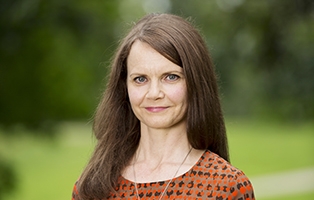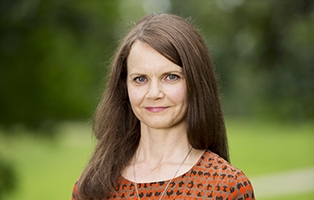The recycling rate for packaging exceeds 60 per cent

 The packaging statistics published in July show that 61 per cent of the packaging that entered the market in 2015 was recycled. Recycling means that the packaging waste is used in the production of new products. The figure does not include reuse or energy-generation operations.
The packaging statistics published in July show that 61 per cent of the packaging that entered the market in 2015 was recycled. Recycling means that the packaging waste is used in the production of new products. The figure does not include reuse or energy-generation operations.
According to the Packaging Waste Decree, the recycling rate should reach 65 per cent by 2020.
“Even if we reached the higher targets set for each material by 2020, it will be quite difficult to exceed the 65-percent overall target,” says RINKI’s Customer Service Manager Maija Peltola.
Glass, plastic, metal and fibre exceeded the targets
The packaging statistics show that the material-specific targets were reached in the glass, plastic, metal and fibre packaging categories in 2015.
The recycling rate for glass was 78 per cent (target 60 per cent), plastic 24 per cent (target 22.5 per cent), metal 84 per cent (target 50 per cent) and fibre 112 per cent (target 60 per cent). Fibre packaging includes paper, cardboard and carton.
Of wooden packaging, 13 per cent was recycled while the target was 15 per cent.
“The wooden packaging is mainly wooden pallets, which are commonly and systematically reused. There are only a limited number of recycling opportunities for other types of wooden packaging in Finland,” Peltola continues.
A slight decrease in the total use of packaging
If we compare these statistics with those from 2014, we can see that the overall use of packaging (the amount of packaging that entered the market or was reused) was slightly lower than the previous year, totalling 1.8 million tonnes.
“It’s impossible, however, to draw any conclusions about any trends from the data from one single year,” Peltola explains.
The amount of packaging that has entered the market over the past ten years has increased slightly. Between 2005 and 2015, it grew by about 4 per cent.
The recession that started in late 2008, early 2009, shows a clear drop in the amount of packaging used in 2009. In 2015, the amount of packaging that entered the market was 0.7 million tonnes, a figure that describes the amount of packaging waste produced. Rinki estimates that of this, 57 per cent was B2B packaging and 43 per cent consumer packaging.
130 kilograms per person
On average, about 130 kilograms of packaging waste is produced per Finn in a year. This figure has not changed much over the past ten years – it has only fallen by one kilogram. According to Eurostat, an average of 163 kilograms of packaging waste was generated per person in the European Union in 2014.
In Finland, the amount of packaging waste is reduced by the common practice of reuse, which means that packaging is used again for the same purpose. Reuse of metal, wooden and plastic packaging is remarkably widespread. Most of the packaging that is reused consists of different types of packaging used for transport.
“The amount of glass packaging that is reused has dropped significantly in the past ten years. The reasons for this include the more widespread use of cans and the changes in the taxation of beverage packaging.”
Peltola says that comparable statistics about reuse of packaging in other EU countries are not available.
“Some EU countries report reuse figures, but these may not cover, for example, transport packaging.”
Approximately 4,000 companies are involved
Rinki collects data from companies that have transferred their producer responsibility to producer organisations in the packaging sector. There are around 4,000 companies in the scheme.
The figures do not include companies whose turnover is less than one million euros, as these companies are not covered by the producer responsibility.
“Packaging is imported into Finland through international online stores and with passengers, and these figures include beverage packaging brought over from Estonia. Unfortunately, there are always some free-riders, companies that should be in the scheme but are not,” says Peltola.
Packaging that is not included in the official statistics also often ends up in the take-back points set up by the producers, in recycling or is used in other processes, which explains why the overall recovery rate for packaging waste was more than 100 per cent (102 per cent) in 2015. In 2014, the overall recovery rate was 98 per cent.
Most of the packaging data are available on the extranet
Peltola says that compiling the packaging data statistics has been greatly facilitated by Rinki’s extranet service: 76 per cent of the data sent by the companies came through this channel. The Finnish-language extranet service has been in use since 2013.
The extranet service helps its users by pointing out any figures that deviate from those reported in previous years. This reduces the number of errors of quantity or unit. Companies can also update their details through the system.
“The extranet has streamlined the monitoring operations and handling of data considerably at Rinki.”
Rinki submits the packaging data from the companies to the Pirkanmaa ELY Centre for Economic Development, Transport and the Environment every year, and the ELY Centre sends the data on to the European Commission.
27.9.2017
Text Päivi Maaniitty
Photo Ville Rinne